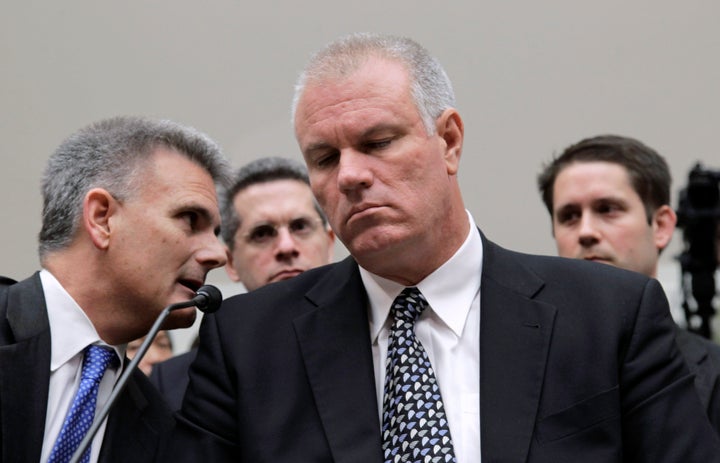
Co-authored with Matt Hopkins
Cross-posted from New Deal 2.0
Solyndra, a venture-backed solar panel maker founded in 2005, was the poster child of the Obama administration's American Recovery and Reinvestment Act (ARRA). It was the first company to receive federal loan guarantees under the already existing Energy Policy Act of 2005. A hefty $535 million in government-backed loans was going to provide 73 percent of the funds to build Solyndra's second manufacturing plant in Fremont, California, with the rest of the financing coming from private equity. It was said that 3,000 workers would find employment in the plant's construction and 1,000 workers in its ongoing operation.
The factory was built, but, overburdened with capacity, Solyndra went bankrupt in August 2011. The company's 2010 sales of 65 megawatts of power were not even 60 percent of the capacity of its first factory, making the 500-megawatt capacity of the second factory totally redundant. As Yuliya Chernova has written in the Wall Street Journal, some investors with knowledge of Solyndra's operations see the government-backed loan as the source of the company's downfall.
There is little doubt that Obama's team could not resist the opportunity to score political points through a deal that promised to stimulate the economy while investing in our renewables future. As President Obama put it when he visited Solyndra in May 2010: "Before the Recovery Act, we could build just 5 percent of the world's solar panels. In the next few years, we're going to double our share to more than 10 percent. Here at this site, Solyndra expects to make enough solar panels each year to generate 500 megawatts of electricity."
But Solyndra was not the only U.S. solar company to go bankrupt last August. Seventeen-year-old Evergreen Solar Inc., a Massachusetts-based company that had received $58 million in state subsidies, closed its factory last March, and then in August entered Chapter 11 with almost $500 million in debt. Also in August -- in between the bankruptcies of Evergreen and Solyndra -- another solar manufacturer, SpectraWatt, called it quits. These three failures resulted in the loss of 2,000 U.S. jobs. As it was, Evergreen had already moved some of its manufacturing to China in an effort to remain competitive.
The global market for solar power was over $71 billion in 2010, double what it was in 2009. Yet there is no question that the future is bleak for solar manufacturing in the United States. According to the Poughkeepsie Journal, in late August SpectraWatt asked the bankruptcy court to permit it to auction off its plant and equipment quickly because "within six months, used solar cell manufacturing equipment and related assets could flood the market and lower its auction bids."
The manufacture of solar panels is a capital-intensive business that requires huge plant-level economies of scale for competitive success. The Chinese have become the leading producers of solar panels for both their home and global markets. Is it possible for a high-wage economy such as the United States to compete as a global manufacturer in the solar industry?
In the case of Solyndra, besides its government-backed loans the company raised over $1 billion in venture capital from 11 major sources. Beyond government subsidies, it is these financiers upon whom we rely for the committed finance required to sustain the operations of a solar manufacturing plant until it can achieve sufficient scale to be profitable. If a venture like Solyndra had not promised eventual success, why would this "smart" business money have flowed so abundantly into it?
The answer is the stock market. The holders of private equity were betting that they could recoup their investments and make a handsome profit for themselves when Solyndra did its initial public offering (IPO) on NASDAQ, even if at that point Solyndra itself might be a long way from attaining profitability. In 2005, when Solyndra was founded, the IPO market was heating up after a sharp slump with the Internet bust at the beginning of the decade, and 2007 was the strongest year for IPOs since 2000. Then the financial meltdown of 2008 killed the IPO market. In December 2009, with the economy in recovery and with its $535 in government-guaranteed loans in hand, Solyndra registered its IPO.
At the time, however, the company had accumulated $558 million in losses since its founding, and in a filing to the Securities and Exchange Commission in April 2010 Solyndra's accountant, PriceWaterhouseCoopers, wrote that its financial condition raised "substantial doubt about its ability to a continue as a going concern." That nixed the possibility of an IPO. Now, with Solyndra in bankruptcy, the investors have lost their money and U.S. taxpayers are on the hook as the company's largest creditor.
For solar manufacturing in the United States to be profitable, it will need committed finance that the U.S. venture capital community -- still by far the world's richest -- is unwilling to provide. They have learned that solar companies require more capital and a longer incubation period than they are willing to endure. If we want advanced solar research to go forward in the United States, we need to engage in advanced manufacturing here as well. In renewable energy, as in other high-tech fields, government and business both need to be involved in providing the "patient" capital required to develop and utilize productive resources. At present, however, notwithstanding its massive wealth, the United States lacks the financial institutions that can cope with the 21st century world of high-technology and global competition.
Matt Hopkins is a research fellow at the UMass Center for Industrial Competitiveness, focusing on issues of clean technology and economic development. He has written a soon-to-be-released report on the U.S. wind turbine industry.
William Lazonick is director of the UMass Center for Industrial Competitiveness and president of The Academic-Industry Research Network. His book, Sustainable Prosperity in the New Economy? Business Organization and High-Tech Employment in the United States was awarded the 2010 Schumpeter Prize.
